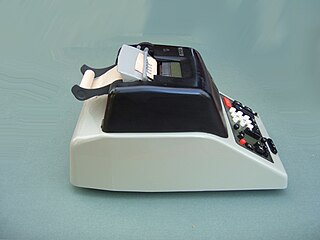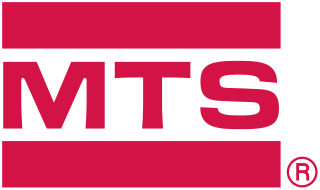
A prototype is an early sample, model, or release of a product built to test a concept or process. It is a term used in a variety of contexts, including semantics, design, electronics, and software programming. A prototype is generally used to evaluate a new design to enhance precision by system analysts and users. Prototyping serves to provide specifications for a real, working system rather than a theoretical one. In some design workflow models, creating a prototype is the step between the formalization and the evaluation of an idea.

Industrial design is a process of design applied to physical products that are to be manufactured by mass production. It is the creative act of determining and defining a product's form and features, which takes place in advance of the manufacture or production of the product. It consists purely of repeated, often automated, replication, while craft-based design is a process or approach in which the form of the product is determined by the product's creator largely concurrent with the act of its production.
Creo Parametric, formerly known, together with Creo Elements/Pro, as Pro/Engineer and Wildfire, is a solid modeling or CAD, CAM, CAE, and associative 3D modeling application, running on Microsoft Windows.
Automotive engineering, along with aerospace engineering and naval architecture, is a branch of vehicle engineering, incorporating elements of mechanical, electrical, electronic, software, and safety engineering as applied to the design, manufacture and operation of motorcycles, automobiles, and trucks and their respective engineering subsystems. It also includes modification of vehicles. Manufacturing domain deals with the creation and assembling the whole parts of automobiles is also included in it. The automotive engineering field is research -intensive and involves direct application of mathematical models and formulas. The study of automotive engineering is to design, develop, fabricate, and test vehicles or vehicle components from the concept stage to production stage. Production, development, and manufacturing are the three major functions in this field.

Gruppo Bertone, commonly known as Bertone, was an Italian automobile company which specialized in car styling, coachbuilding and manufacturing. Bertone styling was distinctive, with most cars having a strong "family resemblance" even if they were badged by different manufacturers. Bertone had styled cars for Abarth, Alfa Romeo, Aston Martin, BMW, Citroën, Ferrari, FIAT, Iso, Lancia, Lamborghini, Mercedes-Benz, Opel, and Volvo, among others. In addition, the Bertone studio was responsible for two of the later designs of the Lambretta motorscooter. In the late 1980s, Bertone styled the K20 motorcycle helmet for Swiss bicycle and motorcycle helmet manufacturer Kiwi.

A car platform is a shared set of common design, engineering, and production efforts, as well as major components over a number of outwardly distinct models and even types of cars, often from different, but somewhat related marques. It is practiced in the automotive industry to reduce the costs associated with the development of products by basing those products on a smaller number of platforms. This further allows companies to create distinct models from a design perspective on similar underpinnings.

Flex Ltd. is an American Singaporean-domiciled multinational electronics contract manufacturer. It is the third largest global electronics manufacturing services (EMS), original design manufacturer (ODM) company by revenue, behind only Pegatron for what concerns original equipment manufacturers. Flex's corporate headquarters are located in Singapore, and its administrative headquarters are in San Jose, California. The company has manufacturing operations in over 40 countries, totalling about 200,000 employees.

In automotive engineering, a grille covers an opening in the body of a vehicle to allow air to enter or exit. Most vehicles feature a grille at the front of the vehicle to protect the radiator and engine. Merriam-Webster describes grilles as "a grating forming a barrier or screen; especially: an ornamental one at the front end of an automobile." The word 'grille' is commonly misspelled as 'grill' which instead refers to the cooking method. Other common grille locations include below the front bumper, in front of the wheels, in the cowl for cabin ventilation, or on the rear deck lid. Grilles evolved from previously installed gravel shields that were designed to protect exposed radiators typically used on cars until the early 1930s.
R.T. Quaife Engineering, Ltd. is a British manufacturer of automotive drivetrain products. It designs and manufactures motorsport and performance orientated gearboxes, gearkits, differentials, steering racks and axle kits, along with many other associated drivetrain products.

Automotive design is the process of developing the appearance of motor vehicles - including automobiles, motorcycles, trucks, buses, coaches, and vans.
Magnesium wheels are wheels manufactured from alloys which contain mostly magnesium. Magnesium wheels are produced either by casting (metalworking), or by forging. Magnesium has several key properties that make it an attractive base metal for wheels: lightness; a high damping capacity; and a high specific strength. Magnesium is the lightest metallic structural material available. It is 1.5 times less dense than aluminium, so magnesium wheels can be designed to be significantly lighter than aluminium alloy wheels, while exhibiting comparable strength. Many competitive racing wheels are made of magnesium alloy.

Integrated Micro-electronics, Inc. provides electronics manufacturing services (EMS) and power semiconductor assembly and test services (SATS) with manufacturing facilities in Asia, Europe, and North America. Its headquarters is located in Biñan, Laguna, Philippines.

Marzocchi is an Italian manufacturer founded in 1949 by brothers Stefano and Guglielmo Marzocchi. The company profile doesn't include hydraulic industrial pumps anymore but only suspension components for motorcycles and bicycles. The Marzocchi Pompe is still in the hands of the Marzocchi Family and produces gear pumps and motors in Bologna. In 2008 the company was acquired by American automotive parts manufacturer Tenneco. Until 2007, Marzocchi manufactured the mountain bike suspension forks in Italy. In order to remain competitive, Marzocchi, like RockShox before it, moved the production of the forks to Taiwan. In the 4th quarter of 2015, Fox Factory acquired certain assets of Marzocchi's mountain bike product lines.

Daxcon Engineering, Inc., is a company headquartered in Bartonville, Illinois, that provides engineering and manufacturing consultation to the Defense & Aerospace, Mining & Construction, Automotive, Consumer Products, and Agriculture industries. On 15 January 2010, it was acquired by Infotech Enterprises America Inc., which is now a wholly owned subsidiary of Cyient, a firm in India.

MTS Systems Corporation (MTS) is a global supplier of test systems and industrial position sensors. The company provides test and measurement products to determine the performance and reliability of vehicles, aircraft, civil structures, biomedical materials and devices and raw materials. Examples of MTS products include: aerodynamics simulators, seismic simulators, load frames, hydraulic actuators and sensors. The company operates in two divisions: Test and Sensors.

The Honda Fury was the first production chopper from a major motorcycle manufacturer Honda. In a break with tradition, the Fury was the first chopper to have an anti-lock braking system The Fury's styling has been likened to custom-made choppers from Paul Teutul Sr. or Arlen Ness. The Fury has been sold not only in North America, but internationally as well, although in some markets Honda eschewed the Fury name and offered the bike simply by its model ID: VT1300CX.

The following outline is provided as an overview of motorcycles and motorcycling:

Paradox Engineering SA is a Swiss technology company that designs and markets solutions and services enabling smart cities and Industry 4.0 applications. The company's mission is to offer technologies to unlock the value of data. Its solutions are ready for the Internet of things, and enable cities and companies to collect, transport, store and deliver any kind of data lying in industrial plants or urban objects, transforming information into actionable intelligence to feed business decisions.

Parametric design is a design method where features are shaped according to algorithmic processes, in contrast to being designed directly. In this method, parameters and rules determine the relationship between design intent and design response. The term parametric refers to input parameters fed into the algorithms.
Industrial and production engineering (IPE) is an interdisciplinary engineering discipline that includes manufacturing technology, engineering sciences, management science, and optimization of complex processes, systems, or organizations. It is concerned with the understanding and application of engineering procedures in manufacturing processes and production methods. Industrial engineering dates back all the way to the industrial revolution, initiated in 1700s by Sir Adam Smith, Henry Ford, Eli Whitney, Frank Gilbreth and Lilian Gilbreth, Henry Gantt, F.W. Taylor, etc. After the 1970s, industrial and production engineering developed worldwide and started to widely use automation and robotics. Industrial and production engineering includes three areas: Mechanical engineering, industrial engineering, and management science.













